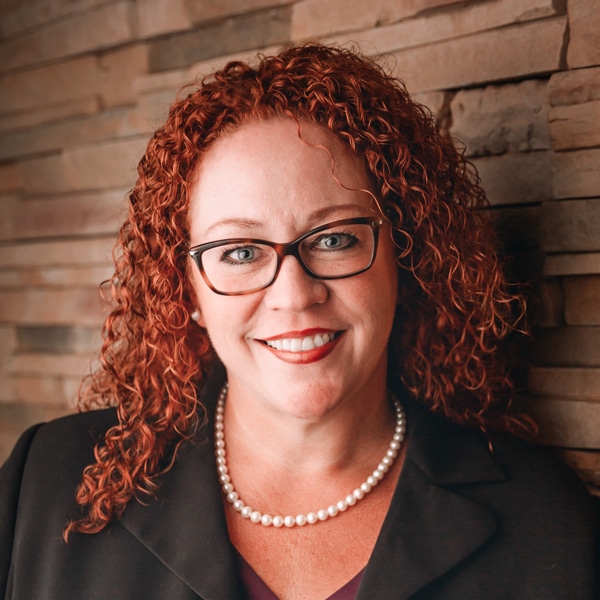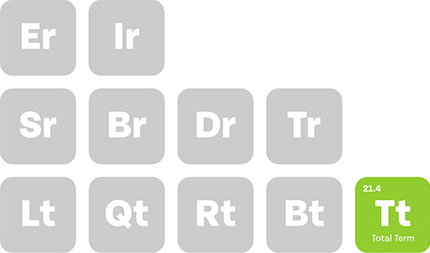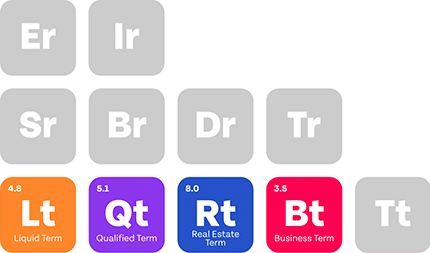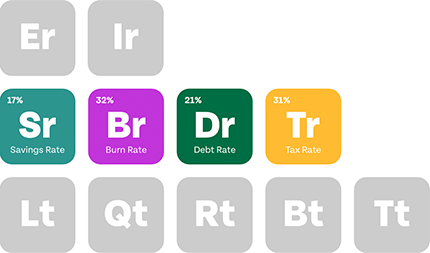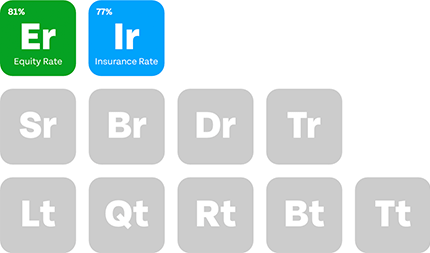Between 2019 and 2024, over 44,000 medical practices were acquired by private equity firms or corporate groups.
By January 2024, corporate ownership of medical practices officially outpaced hospital ownership for the first time, with corporations controlling 30.1% of all practices.
If you’re thinking of selling your medical practice, you’re stepping into a fast-moving market where buyers know exactly what they want, and where competition among sellers may be at a flash point.
To stand out, you will need to know what buyers are looking for, how to position your practice, and what steps you could take to protect its value. Read on to learn all of that and more.
Key Takeaways
- Over 44,000 practices were acquired between 2019–2024 by corporate buyers.
- Sellers must clarify goals, build a team, and prep documentation before listing.
- Buyers prefer asset sales; valuation hinges on goodwill, financials, and liabilities.
- Negotiating structure, due diligence, and legal safeguards are key to closing deals.
Table of Contents
Step 1: Understand Why You’re Selling
Before you put your business for sale, you want to be clear about why you are selling. Your reason will affect every decision you make during the process.
If you’re selling your practice after reaching retirement age, you may be less concerned about maintaining confidentiality throughout the process.
But if your practice is your primary way to make money and you’re selling it because of burnout or simply wanting more stability in your life, you may want to keep more control over the sale process.
You might also have to contend with the lack of final say if you plan to work for the new buyer.
Step 2: Find the Right Type of Buyer
When you’re selling a practice, you can’t simply choose a buyer who offers the best price, because the contract details and terms are what truly matter in these transactions.
If your goals, operational style, and vision don’t match, how will the buyer carry the practice forward?
Here are the types of buyers you’ll run into:
- New physicians
- Small specialty groups
- Mid-sized or large groups
- Large specialty groups
- Hospital/healthcare systems
- Private equity firms
Each type will bring different priorities and expectations to the table.
If you’re looking to step back from the day-to-day of your practice but still want to be present, a new physician might be a good option because they may want transition support.
Step 3: Build Your Team
Selling a practice might be one of the most complex business transactions you’ll ever undertake, so you should never try to handle it alone.
Here are the people you’ll need on your team:
- Legal counsel . Your lawyer will draft and review contracts, help you structure your transaction, and make sure it doesn’t violate the anti-kickback statute, the Stark Law, or HIPAA regulations.
- Compliance expert . They will help you find potential regulatory risks that could cause problems after closing.
- Broker or merger and acquisition advisor. They will help you market your practice, identify serious buyers, and manage negotiations.
- Accountant/financial planner . They help you structure your transaction to reduce taxes and proceeds.
- Valuation professional . You don’t always need a valuation, but a certified appraiser will create a formal fair market value (FMV) report that will meet fraud and abuse law requirements. It’s always a good idea to get a valuation done because it helps you understand what your practice is actually worth, which might be different from what you hope to get for it.
Get Professional Help
The team at Physicians Thrive are experts in these types of transactions – from medical practice financing to tax planning and strategy.
Ensure that you’ve truly thought through the ins and outs of the sale before you proceed.
Step 4: Think About the Type of Sale
One important decision you’ll have to make is whether to sell the assets of the practice or the equity (ownership) in your practice entity.
Asset Sale
In an asset sale, you sell specific practice assets, like medical equipment, accounts receivable, goodwill, and sometimes the lease or real estate.
The buyer selects which assets they want and generally avoids taking on your liabilities.
Many buyers prefer this structure because they get a clean start and can benefit from tax advantages, like stepped-up depreciation on purchased assets.
As the seller, however, you retain responsibility for any lingering debts, lawsuits, or compliance issues tied to the practice before the sale.
You’ll also likely continue to own the original company, just without its main operating assets.
Equity Sale
In an equity sale, you sell your ownership interest, which is shares of a professional corporation (PC) or membership interests of a professional limited liability company (PLLC).
The buyer steps into the shoes of the original owner(s) and inherits everything: assets, liabilities, contracts, employees, and all existing relationships with insurers, vendors, and landlords.
Equity sales can sometimes be faster and more straightforward from an operational standpoint (for example, payer contracts don’t always need re-credentialing).
But buyers often think of them as riskier because they inherit hidden liabilities along with the business.
Merger
If two small practices want to join forces, a merger happens.
This is when your practice combines with another similar or closely related practice, and only one legal entity survives, or an entirely new entity is created.
This carries forward the assets and liabilities of both original practices.
Step 5: Prepare the Practice for Sale
It’s important to get your practice ready for buyers to see, whether it’s an adult, primary care, medical spa, or pediatric practice.
This will help you command a higher price, speed up the sale, and build buyer confidence during due diligence.
Here’s what this usually involves:
-
Update and organize your documentation . Buyers will expect to see a full set of corporate and operational documents, including:
-
Articles of incorporation
-
Operating agreements
-
Shareholders agreements
-
Meeting minutes
-
Payor contracts
-
Employment agreements
-
Compliance policies You need to make sure all licenses, certificates, and registrations are active and in good standing. Also, review any administrative issues or compliance concerns at this stage.
-
Clean up financial records . Your practice should be using accrual-based accounting, which gives a more professional picture of revenues and expenses than cash-based methods. Make sure you have at least three to five years of financial statements, tax returns, accounts receivable reports, vendor contracts, and a list of outstanding debts.
-
Resolve outstanding obligations . Make sure all open compliance investigations, litigation, tax disputes, or contractual breaches have been settled before the buyer asks to look at your record. If you don’t do this, unresolved problems may slow or kill the sale.
-
Know your assets . You need to create a complete inventory of tangible and intangible assets. Tangibles include medical equipment, office furniture, supplies, computers, and real estate (if owned). Intangibles include patient lists, brand reputation, goodwill, vendor relationships, and proprietary protocols.
-
Settle any issues regarding ancillary services . If your practice owns an ambulatory surgery center, imaging facility, or similar ancillary business, you may need a separate transaction to sell those assets. This will require you to comply with different regulatory and valuation standards.
Related: How to start a medical practice
Step 6: Determine a Value for Your Practice
For healthcare transactions, the purchase price has to meet fair market value to comply with healthcare laws.
FMV means a price that would be agreed upon between a willing buyer and a willing seller, neither under compulsion, both having reasonable knowledge of the relevant facts.
In most medical practice sales, much of the value comes from the intangible assets, primarily goodwill, which is the value of your reputation, the stability and loyalty of your patient base, your payer mix, referral sources, location, and the practice’s overall profitability.
Since goodwill is not a fixed number, it’s inherently negotiable, meaning you and your buyer will need to find common ground on its value.
Any financials, outstanding liabilities, and capital assets will also have to be discussed at this stage because they’ll influence the valuation.
Here are three ways this valuation could be done:
- Income approach . It involves projecting your practice’s future earnings based on historical performance and discounting them back to the present value using a risk-adjusted discount rate.
- Market approach . Under this method, your appraiser will compare your practice to other similar practices that have sold recently in your area or specialty. But reliable comparable sales data can be difficult to find, especially for niche specialists or smaller markets. This means the market approach will rarely be the only strategy used.
- Asset-based approach . This approach totals up all the tangible assets and subtracts any liabilities to find your practice’s value. This will work if you have a lot of hard assets but aren’t very profitable.
While all of these approaches will give you your practice’s FMV, this is not its investment value, which is the value a specific buyer is willing to assign to your practice based on their goals. Your FMV is also not the price of your practice.
Because while a valuationgives you a well-reasoned opinion of what your practice is worth, priceis what you and a buyer ultimately agree to, based on motivations, negotiation dynamics, and the specifics of your deal.
Ideally, buyers expect to recoup their investment within five years or less, based on their increased earnings compared to typical employed physician salaries.
Step 7: Handle Due Diligence
Once you settle on a fair value, the buyer will conduct a detailed due diligence review to verify that what you’re selling matches what’s on paper.
Due diligence will cover every part of your practice, including:
- Corporate documents like articles of incorporation, bylaws, operating agreements, and shareholder resolutions
- Corporate structure, affiliates, and ownership percentages
- Records of major decisions that could affect future operations
- Three to five years’ worth of financial records
- Revenue streams
- Patient demographics
- Payer mix, overhead costs, and liabilities
- HIPAA compliance history
- Billing practices
- Prior audits
- Training records
- Internal compliance programs
- Human resources infrastructure, like a roster of all employees and contractors, copies of employment agreements, benefits plans, and records of past employment disputes
- Technical and intellectual property, like EMR systems, IT infrastructure, security protocols, disaster recovery plans, and vendor contracts for software
- Real estate
- Insurance policies
- Supplier contracts
- Ancillary insurance and services
Your buyers will also want to evaluate the predictability of your collections, your net collection rate strength, and any major changes that could affect future income.
Step 8: Prepare for Negotiations and Closing
After due diligence wraps up, you need to settle the final terms and get ready to close.
At this point, both you and the buyer will have a fair idea of what your practice is worth, so you’ll negotiate the final price.
What you both agree to at the table will be the final price.
Aside from that, here’s what you’ll need to do:
- Negotiate structure, like an all-cash deal, a payment plan over a few years, or a combination of cash and future earn-outs tied to performance metrics like revenue or patient retention.
- Finalize your employment agreement or transitional services agreement if you’re going to be staying on to help with goodwill transfer, but be realistic about what you’re willing (and able) to do.
- Settle real estate terms. If you own the practice’s real estate, the buyer could buy or lease it from you. But if it’s a lease, make sure the agreement has fair market rent and mentions all maintenance and improvement responsibilities.
- File regulatory notices and approvals with local or state health departments, Medicare, payers, and licensing boards. You also need to secure tail malpractice insurance coverage if your old policy doesn’t carry over.
- Notify staff and patients of the transition. You should start this a few weeks or months before the closing to reassure your community.
All of these will be covered in your purchase agreement, which is the master document that details the deal.
It will also include legal protections like representations and warranties (your promises about the condition of the business), indemnification clauses (how risks are shared after closing), and detailed closing conditions.
Your lawyer should review this document with a fine-tooth comb. It’s one place you don’t want any surprises.
Sell While Your Practice Still Has Potential With Physicians Thrive
Your well-established practice holds years of hard work, trust, and reputation, so you’ll want it to be taken care of when you sell it.
But finding a buyer who will respect what you’ve built and pay the right price for it isn’t always easy. This is where we come in.
At Physicians Thrive, we help physicians like you prepare for the sale, connect with qualified buyers, and structure deals that help you get the true value of your practice.
We help all specialties, whether you’re in internal medicine, family medicine, plastic surgery, or even physical therapy. Our team will work to make sure the sale supports your goals and sets you up for what’s next.
Ready to learn how we can help you find fair value for your practice? Give us a call today!



























